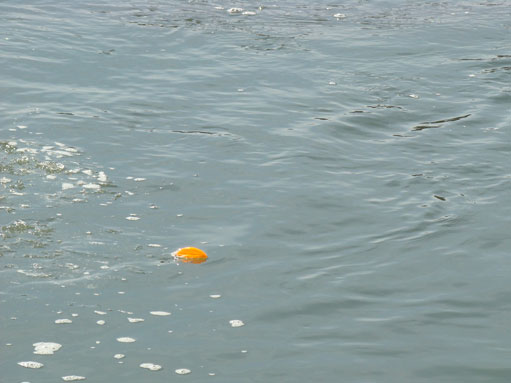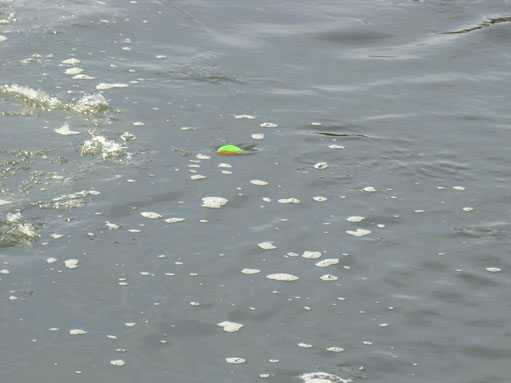Location is everything.
Location is everything. Most of the time to reach fish and make a presentation with bait or lures, anglers cast using a rod and reel. However, there are some other unusual methods to get your hook out there.
For example, in an episode of River Monsters, Jeremy Wade set his reel to free spool, left his fishing rod in a holder, and paddled a small raft a long distance to drop his baited hook where he wanted it placed. Carp anglers have used slingshots, if not for the bait, then for dispersal of attracting chum. And kites can be employed when fishing for such pelagic species as marlin or sailfish. There is an experimental, triangular bobber rig being tested called the FarOutRigger to float bait far beyond casting range. Not long ago, I even watched a video of a remote controlled boat that was used to fish.
There is a unique bobber that acts like it has remote control too. Standard bobbers or floats serve as an indicator of a bite and hold bait or lures at a set depth. However, you remain at the whim of the current or wind. After drifting by the target area, you must recast.


- Keeled bobber moving right, toward current.


- With a twitch, the keeled bobber flips and heads the other direction.
The can do a neat trick. It has a keel or fin on both sides so that it will set a course and either travel left or right. Give it a twitch and it will flip over to change directions. While kids are waiting for a fish to bite, they can have fun “steering” it to navigate through the current. Or for ponds and lakes, they could reel it in and then tug when needed to slalom through an obstacle course of rocks or logs.
Have you used any abnormal methods for placement of your bait?









